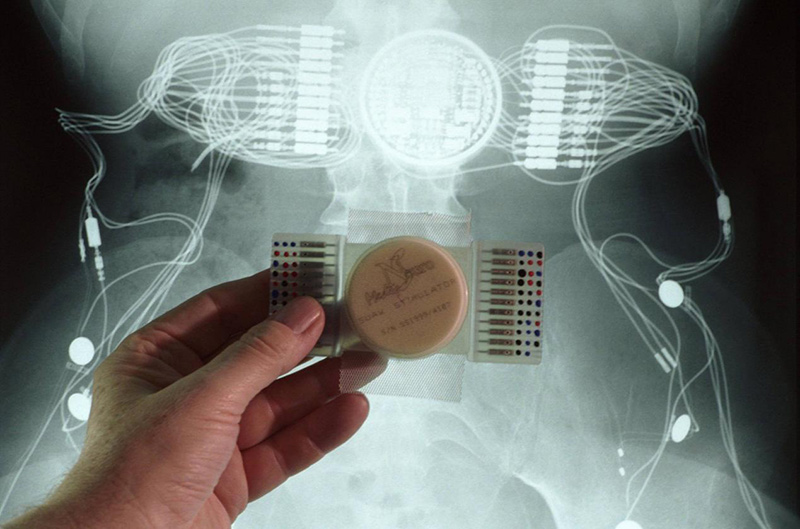人工智能現在已經能夠讀取你的想法,并轉化成語言和圖像

|
《自然》(Nature)雜志最近發表的一篇文章重點介紹了一個新發現,該發現突破了人類想象力的邊界,挑戰了一些讓人之所以為人的特有屬性。這篇文章詳細介紹了人工智能如何通過解讀大腦信號,形成語言(文章甚至還提供了一段音頻讓你能親自聽一下)。對于那些無法說話的人來說,這是一項重大進步,因為這項技術創造了一種直接將思想轉換成言語的途徑。
這一發現的深意不僅僅在于語言的再創造:人工智能被用來破譯腦電波,然后將神經沖動進行重組。雖然這項研究更關注的是構成語言的機械成分,例如直接的肌肉運動,但實驗過程也包含從思維發展的早期階段獲取信息來組建語言,這些語言在70%的情況下都可以識別。換句話說,人工智能其實將人說話之前的動作代碼進行了翻譯。
人工智能通過閱讀神經網絡的輸出,還可以重現另一種感觀:視覺。例如,在最近的一項研究中,將機能性磁共振成像(fMRI)的數據與機器學習相結合,將大腦感知到的內容可視化。這種大腦活動的圖像重建——通過人工智能進行轉化——在計算機屏幕上重新創造的圖像甚至連外行的觀察者都認為是原始的視覺刺激物。
真正有意思的是:這些進步創造了一種可能性,由人工智能和技術(而非人類)擔當媒介的直接溝通可以達到一種新水平。
目前正在采取措施,將這種技術從研究過渡到現實生活中。現在正在動物身上測試電子網板的使用——一種放置在大腦中并與實際神經細胞隔離的柔性電路微觀網絡。埃隆·馬斯克也參與了這項事業,研究如何處理直接發送給人腦或人腦直接發出的沖動。他的公司Neuralink目前正在使用神經花邊技術開發計算機和大腦之間的接口——相當于一種細胞的基礎架構,可以將微電極整合到大腦結構中。
未來,人與機器之間的區別將變得更加模糊:人工智能可能很快就會找到一個新家,不是作為一個外部設備,而更像是一個生活在我們體內的神經機械生物系統。目前,人們可以將語言和視覺編碼成感官數據,未來還可能發明能與生物機體兼容的微型接口,這將推動生物學和技術發展開拓出新前景,屆時人體部位和電子零件相結合,將能夠超越細胞和電子的局限性。(財富中文網)
約翰·諾斯特是Nostalab的總裁。 譯者:Agatha |
A recent article in Nature highlights a discovery that pushes the boundaries of our imaginations and challenges some of the very attributes that make us human. The piece details how artificial intelligence is creating speech by interpreting brain signals (and even offers an audio recording for a chance to hear it for yourself). It’s a key advancement for people who can’t speak because it provides a direct technologically-enabled path from thought to speech.
The implications of this discovery go beyond the recreation of speech: A.I. was used to decode brain waves and then reassemble neural impulses. While the focus of this study was on the mechanistic components of speech, such as direct muscle movement, it still acquired information from the early stages of thought development to construct words that were identifiable about 70% of the time. In other words, A.I. actually translated the code that makes up pre-speech.
A.I. has also enabled the recreation of another sense through the reading of neural output: vision. In a recent study, for instance, functional magnetic resonance imaging (fMRI) data was combined with machine learning to visualize perceptual content from the brain. Image reconstruction from this brain activity—which was translated by A.I.—recreated images on a computer screen that even the casual observer could recognize as the original visual stimuli.
But here’s where it gets really interesting: These advancements create the potential for a new level of direct communication mediated not by humans but by A.I. and technology.
Steps are currently being taken to transition such technology from research to real-life application. The utility of an electronic mesh—a microscopic network of flexible circuits that are placed into the brain and insulated with actual nerve cells—is being tested in animals now. Even Elon Musk has entered the endeavour of processing impulses directly to and from the human brain. His company Neuralink is currently developing an interface between the computer and brain using neural lace technology—a cellular infrastructure that allows microelectrodes to be incorporated into the structure of the brain itself.
What lies ahead is more of the blurred distinction between man and machine: A.I. may soon find a new home as less of an external device and more of a neuromechanical biological system that lives within our bodies. The codification of speech and vision into pre-sensory data and the potential creation of miniature, biologically-compatible interfaces will drive a new vista for biology and technology where the sum of the parts—human and electronic—combine to transcend the limitations of the cell and the electron.
John Nosta is president of NostaLab. |











